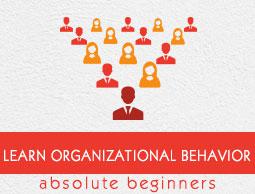Organizational Behavior - Change
Organizational change can be defined as the alteration in structure, technology or people in an organization or behavior by an organization. Here we need to note that change in organizational culture is different from change in an organization. A new method or style or new rule is implemented here.
An organizational change occurs due to two major factors namely −
External factor − External factors are those factors that are present outside the firm but force the firm to change or implement a new law, rule etc. For example, all banks are bound to follow the rules laid down by the RBI.
Internal factor − Internal factors are those factors that are caused or introduced inside an organization that forces a change. For example, no smoking in the workplace.
Kurt Lewin’s Force Field Analysis
Kurt Lewin, is a noted organizational theorist, who proposed the force field analysis for organizational change. In this theory, he has prioritized two factors for change in an organization, namely −
Driving force − Driving force can be defined as an organizational force that makes a change with respect to structure, people and technology. In short, it drives the organization from one culture to another.
Restoring force − Restoring force is the force which changes the culture from the existing state to the old state. It indicates a backward motion while the driving force indicates a forward motion.
Importance of Organizational Change
There is a need of change in an organization because there is always a hope for further development, and in order to survive in a competitive market, the organization needs to be updated with changes. However, we have listed some reasons to explain why changes are deliberately made and carefully planned by the organization before implementation.
- It improves the means to satisfy the economic requirements of people.
- It enhances the profitability of organization.
- It promotes employee satisfaction and well-being.
Planned Change
We can define planned change as any kind of alteration or modification which is done in advance and differently for improvement.
The Need for Planned Change
Planned change takes places in an organization when there is a demand for change due to two types of forces. These forces are grouped into internal sources and external sources.
Internal forces that lead to a planned change in an organization include obsolescence of production and service, new market opportunities, new strategic direction, increasing workforce diversity, and shift in socio-cultural values.
External forces that lead to a planned change in an organization include regulators, competitors, market force, customers, and technology. Each of these forces can create pressing demand for change in small or big, public or private, business or non-business organizations.
Process of Planned Change
Once the management decides to implement some changes in the organization, it needs to be done carefully as it is a very sensitive issue. It is very important for all the employees to adapt to change. According to Kurt Lewin, the planned organizational change is implemented in three different stages. They are −
Unfreezing − In this stage, the organization studies if the change is required or not, what and why is the change necessary. Considering the entire situation, the organization decides for appropriate change. Thus a plan and strategy is formulated as required.
Changing − In this stage, the organization executes the plan and program for change. For this purpose, proper precautions are taken in order to maintain cooperation and coordination between the employees and management, avoiding miscommunication or disputes. Adequate supervision and control is arranged as needed.
Refreezing − This is the final stage, in order to bring organizational change. By way of supervision, the organization tries to evaluate the effectiveness of change. Collecting all this information, the management interprets whether to continue or replace change by some other alternatives or to make further minor changes.
Types of Planned Change
On the basis of a company’s requirement planned change is classified into three types. They are −
- Change in structure
- Change in technology
- Change in people
Change in Structure
We say that the planned change required is change in structure when development is required in these following areas −
- Change in management
- New management
- Change in position or location
- Change in objective, rules, regulations etc.
- Launching new branches
Change in Technology
We say that the planned change required is change in technology when development is required in these following areas −
- Need of office automation
- Installing new hardware and software
- Executing new working procedures
- New methods in production function
- Producing new products and devices
- New training, research and development program
Change in People
We say that the planned change required is change in people when development is required in these following areas −
- New candidate requirement
- Promotion or demotion
- Transfer to other location
- Suspension or dismissal
- Deputation
- Training and development


